I
removed the coil bracket from the the master cylinder frame cover, then
removed the cover, revealing the brake and clutch MC push rods.
Here is what the clutch MC push rod looked like.
|
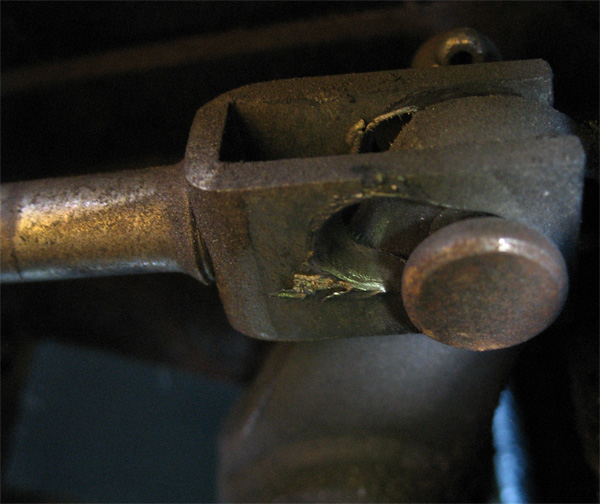 |
The
top of the clutch pedal pivot joint looked no better.
So here is the reason for the 40-50mm of free play
on my clutch pedal. The push rod never made it all the way into
the MC when I stepped on the clutch - you know the results.
The clevis pin showed a bit of wear (!)
|
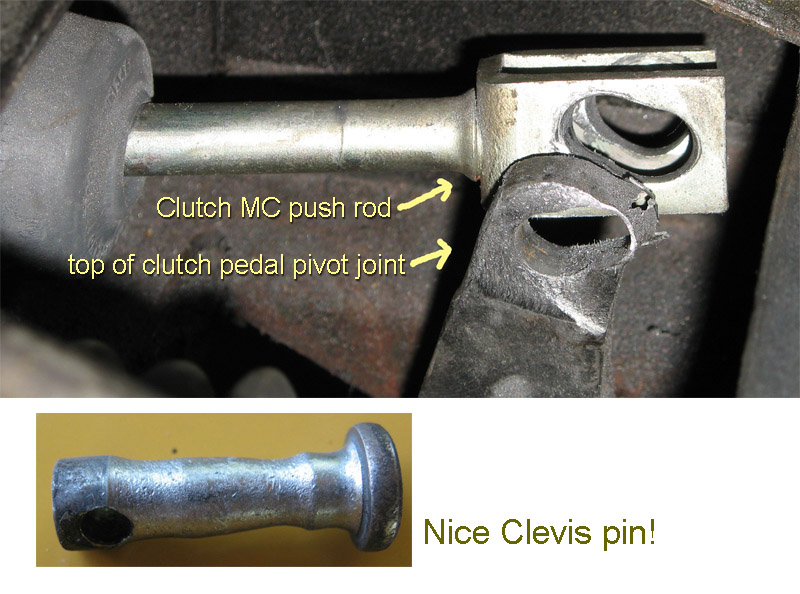 |
The
clutch master cylinder push rod is held in with a large washer which in
turn is held in place by a snap ring.
Given the difficulty involved in detaching the clutch MC from it's
frame, because of an inaccessible nut at the bottom, I had hoped I
could get the snap ring out with the MC in place. This was not to
be. I, and my tools, could not contort into the necessary shape.
|
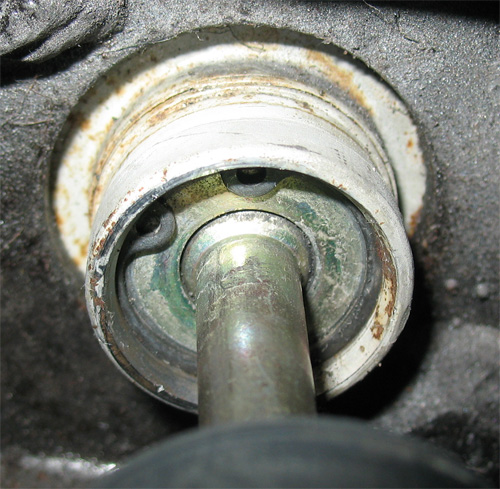 |
So
then the next best thing would be to remove the clutch MC from it's
frame, while keeping it's fluid line attached, and not disturbing the
brake MC at all. I unbolted the frame, then lifted up the back
end about 4" and stuck a wooden block under it to keep it in
place. From there I was able to get a wrench to the bottom nut
holding in the clutch MC. Mercifully the piping leading away from
the brake MC was not adversly effected by a little twisting!
In this photo the clutch MC is still in place, with it's orange tubing
running away from it.
|
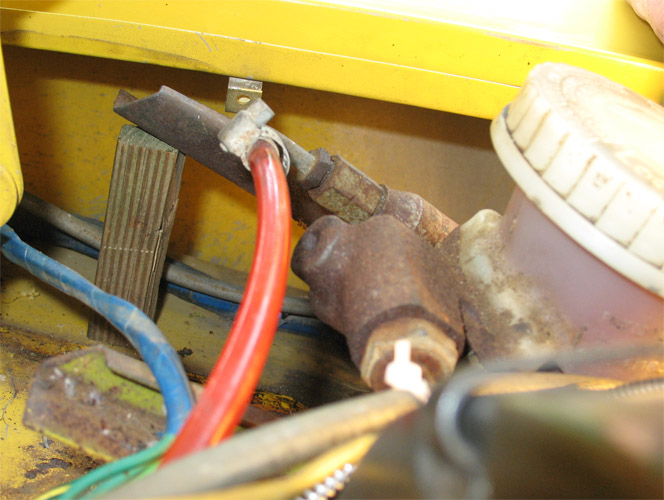 |
Upon
removing the clip, the push rod came out and the piston immediately
revealed itself.
|
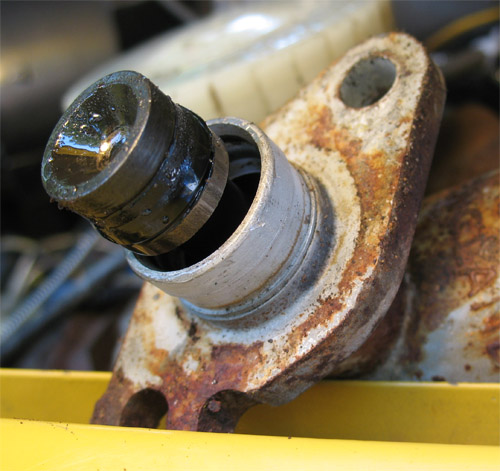 |
Here
is
the old push rod and the new, with the the rubber
and ring clip moved
over to the new one.
|
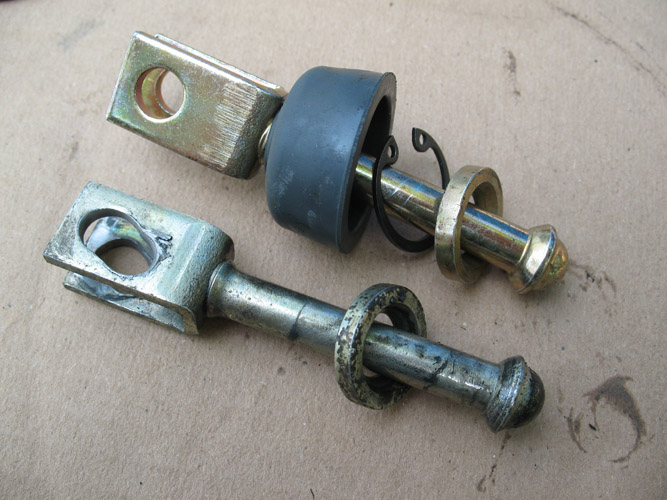 |
To
get the ring clip back in with a minimum of fuss, I compressed the
clutch MC push rod all the way, then used some wire to hold it in
place.
I also flipped the rubber cover to get it a bit more out of the way.
Then getting the clip on was no problem. |
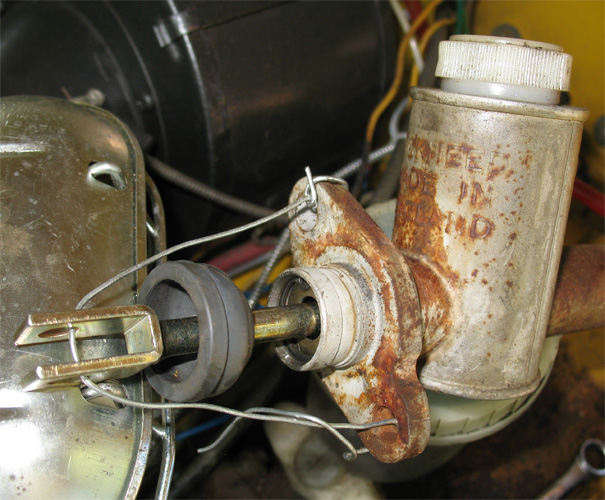 |
Here
is the new clevis pin resting on the clutch pedal pivot point. A
lot of metal sure was ground off of the clutch pedal over the last 30
yeaars!
My plan is to NOT remove the clutch pedal, and to fill the space
between the clevis pin and the distorted edge of the hole with a
fast-setting two-part epoxy putty. (Please note that this is not
really the best or safest solution - getting a new pedal, or welding
the bad one is preferable. But regardless of all that...)
|
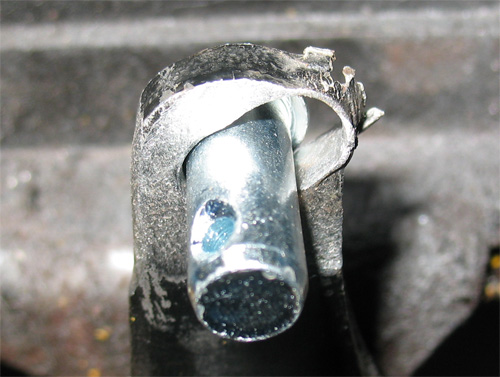 |
I
wrapped the clevis pin in saran wrap. Then I was able to use the
in-place pin as a form to pack epoxy putty around, when building up the
pedal.
|
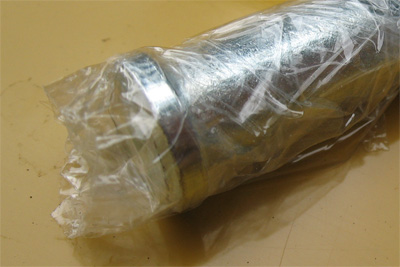 |
Here's
the stuff. It hardens in 5 minutes or less, so plan ahead!
$5 or so at home depot in the plumbing dept. Just slice off a bit
and knead to activate.
|
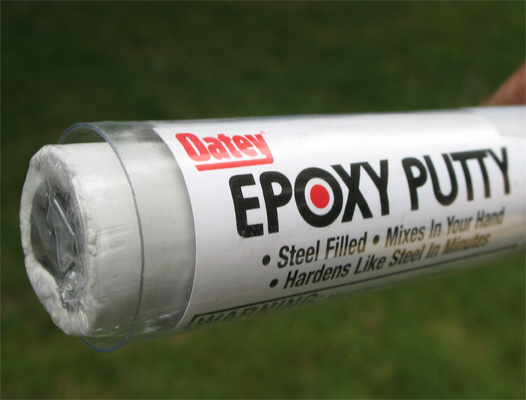 |
Here
is the putty packed around the clevis pin, filling the distorted area,
and built up a bit beyond it
|
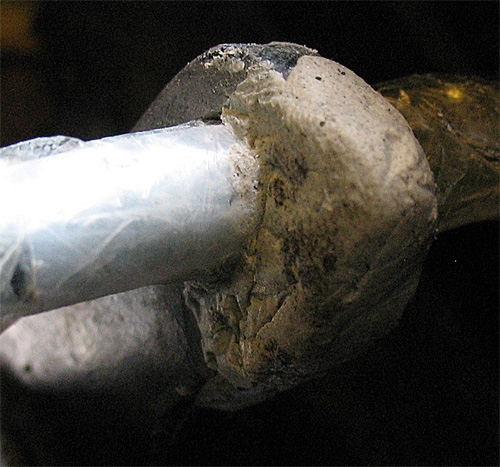 |
After
ten minutes or so, I pulled out the clevis pin and filed down the
excess putty
|
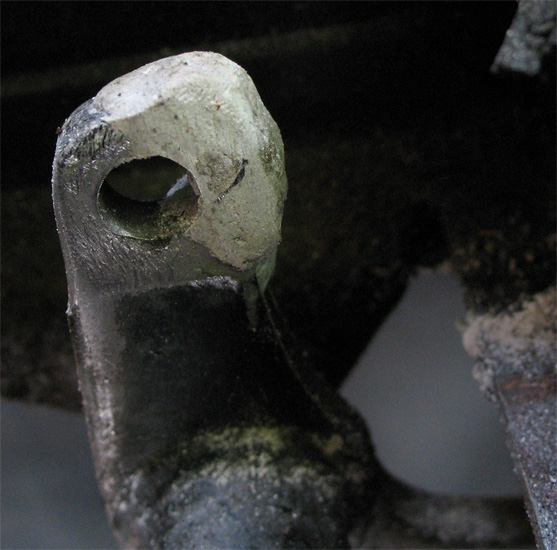 |
Here
are the parts in place.
Things are working much better now. The free play on the clutch pedal
has been reduced to a 1/8" or less, and shifting to all gears is
fine.
I have since purchased a good clutch pedal from a listmember.
Though my fix seems to be holding up well, and has taken the car about
300 miles as of this writing, there's no guarantee that the putty will
hold together forever.
|
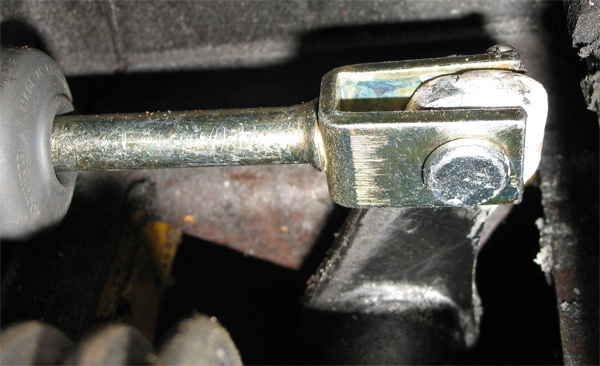 |












